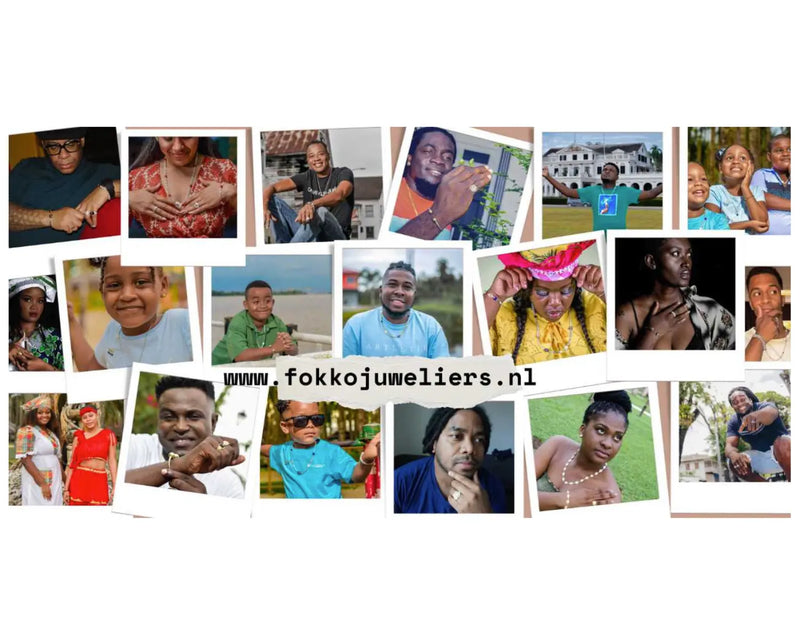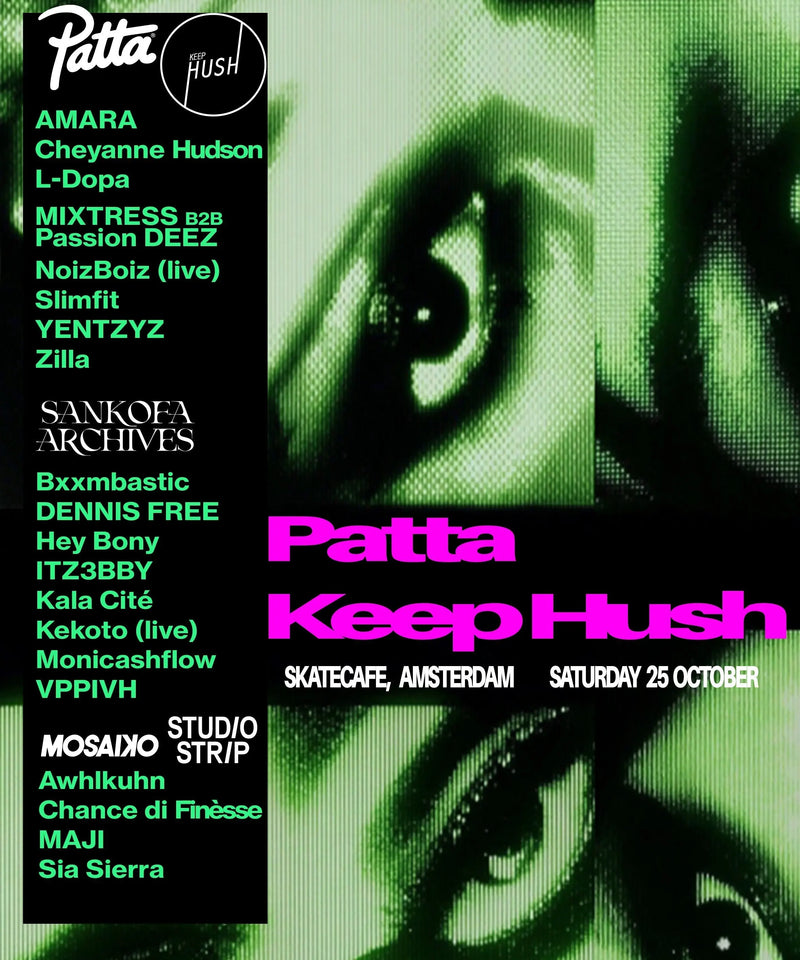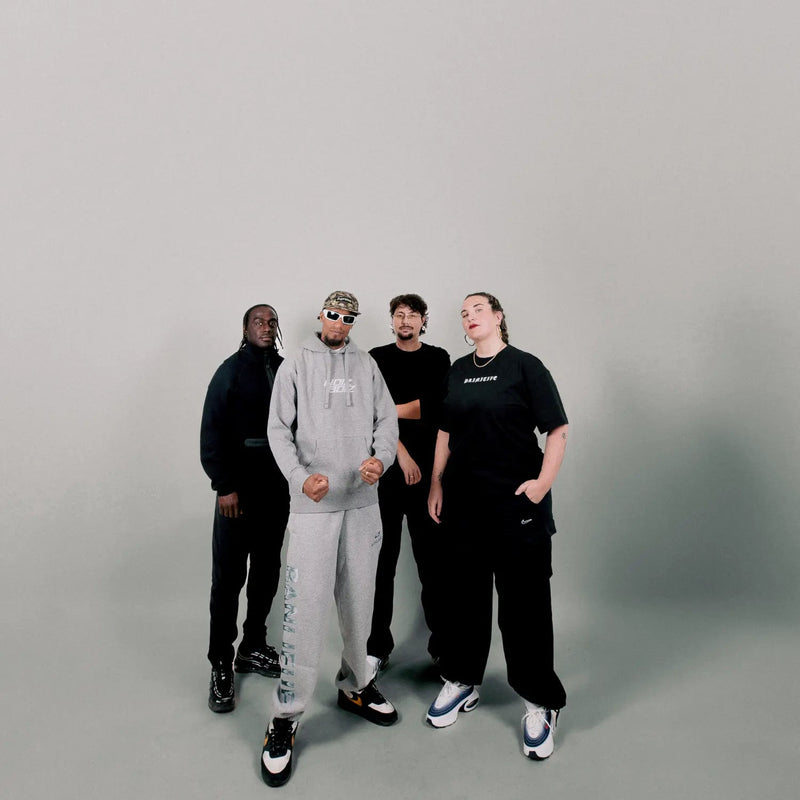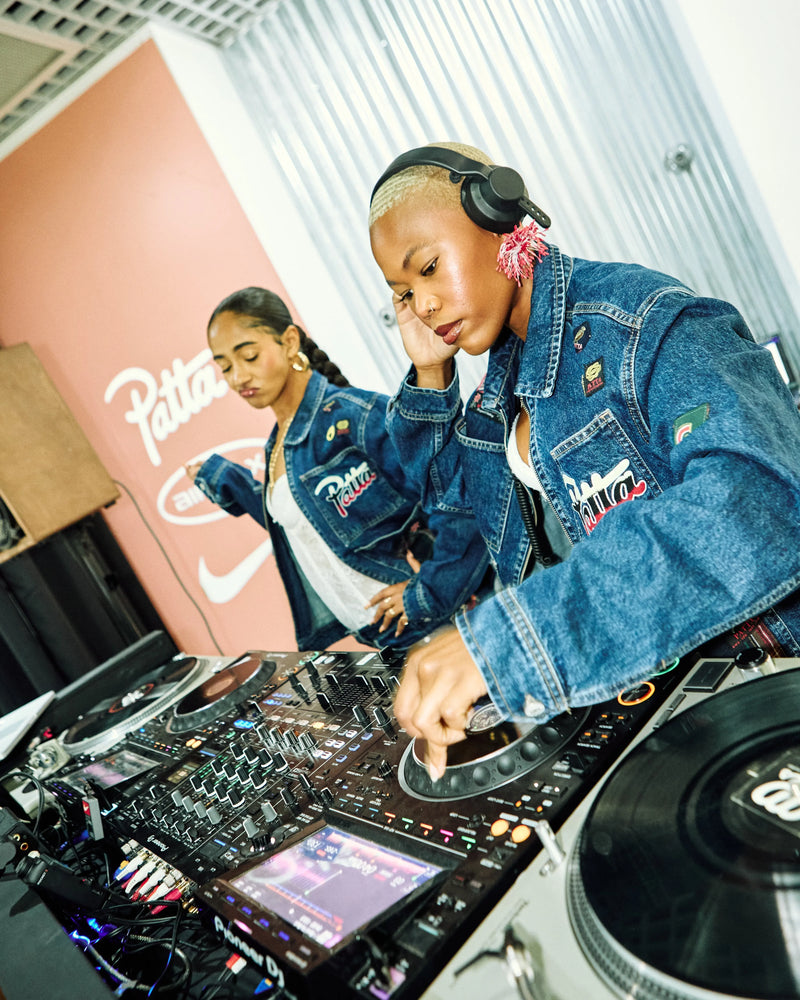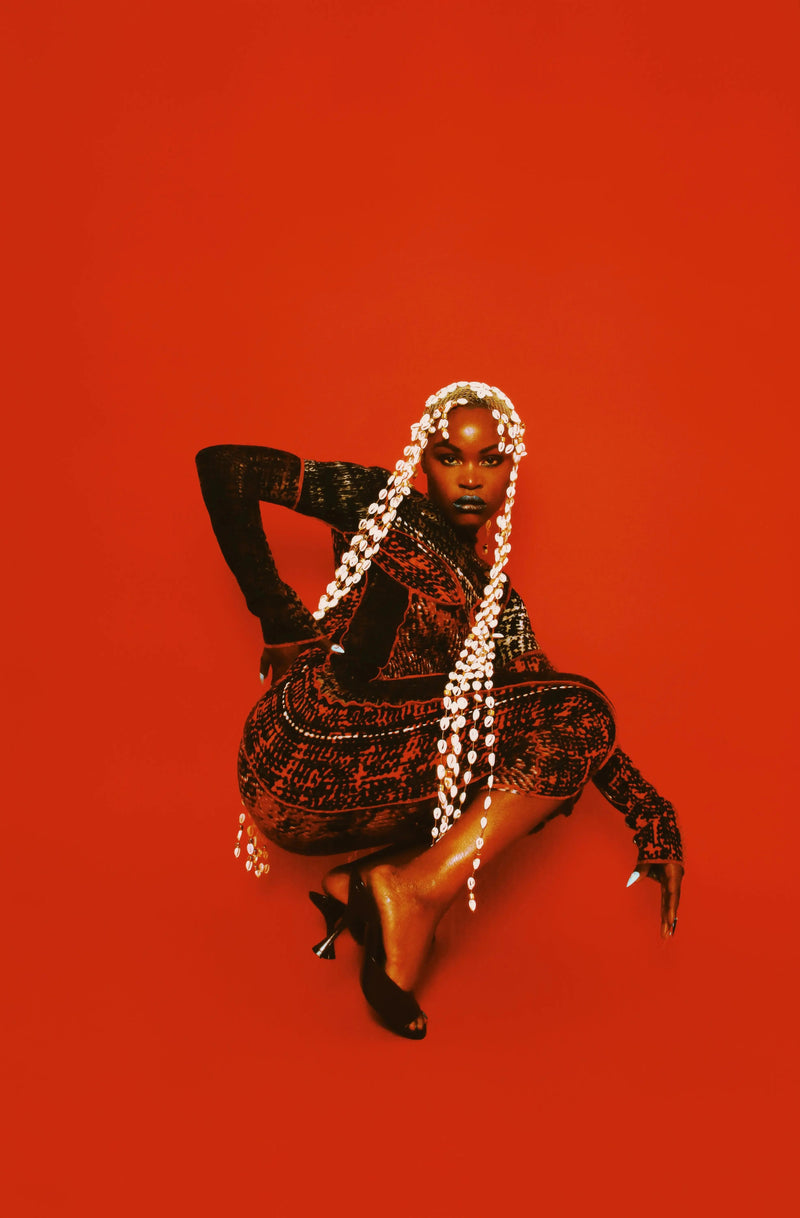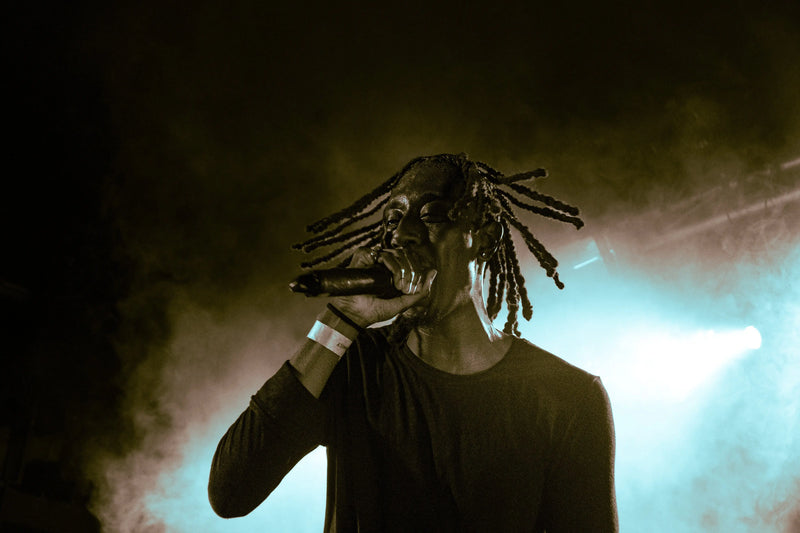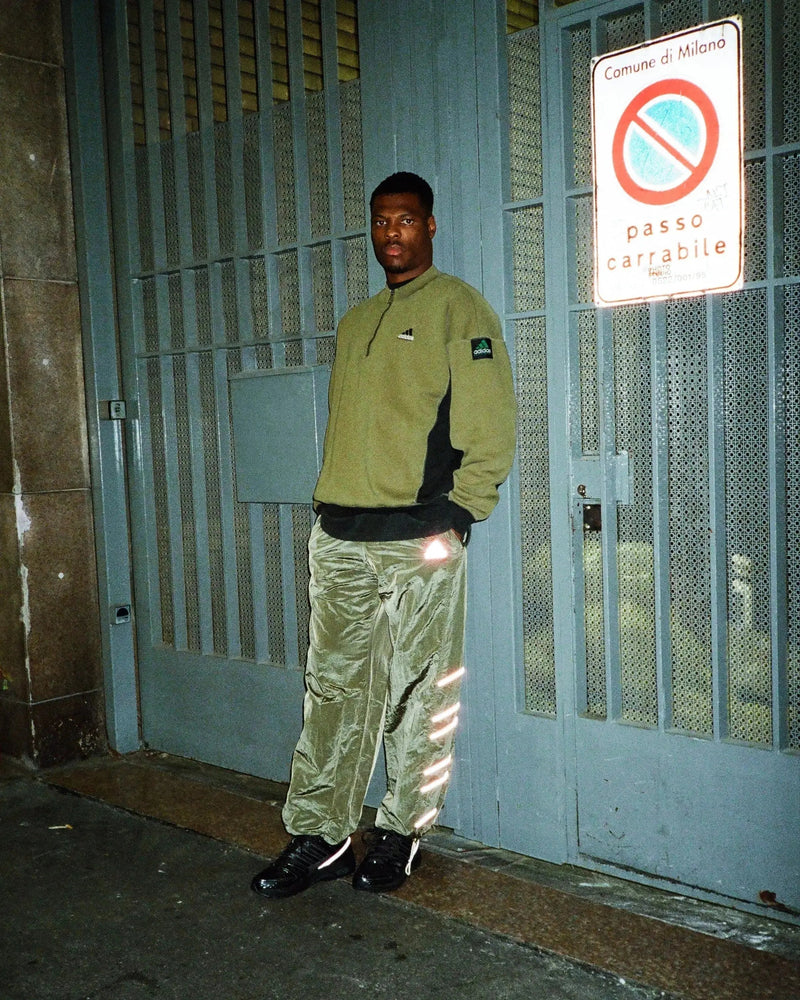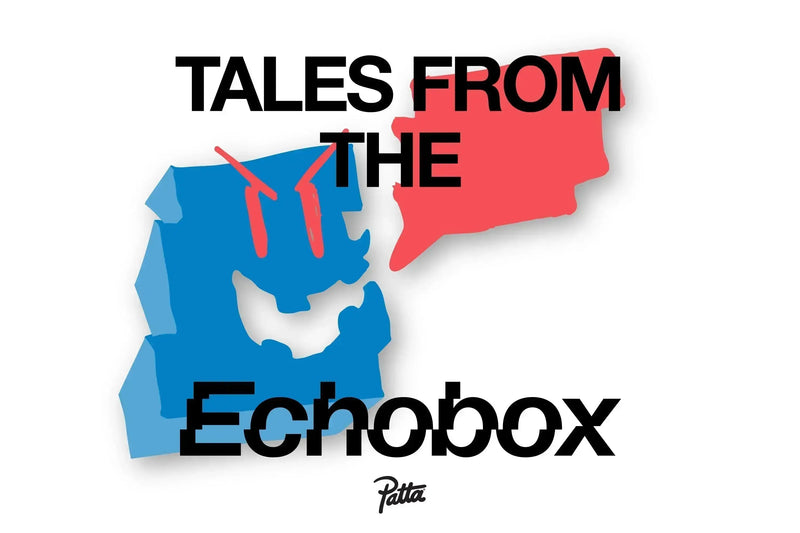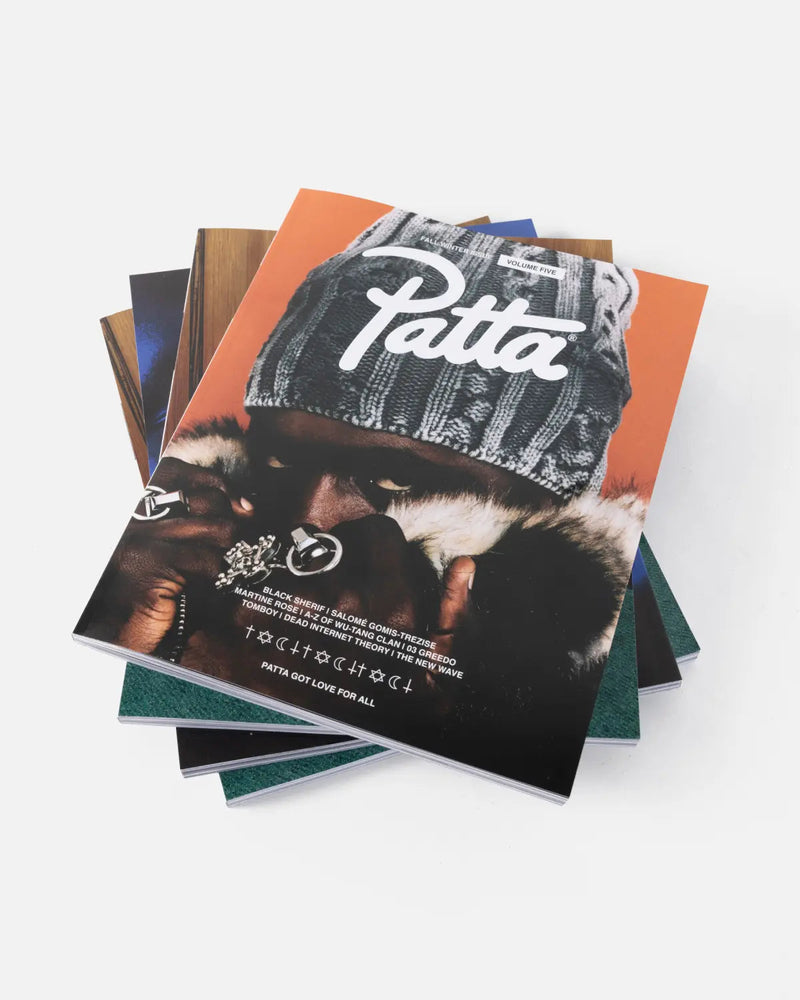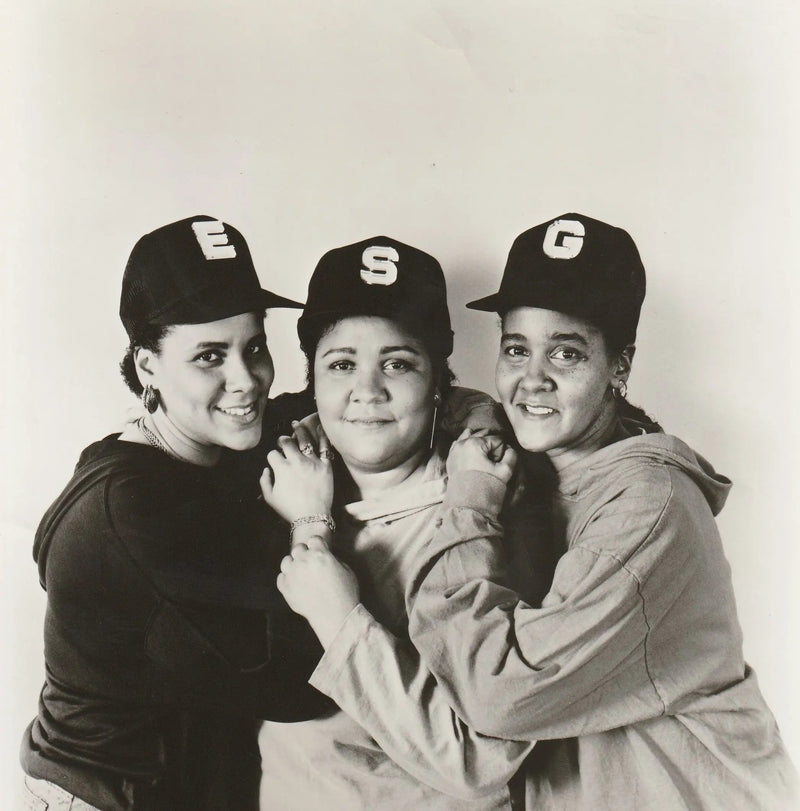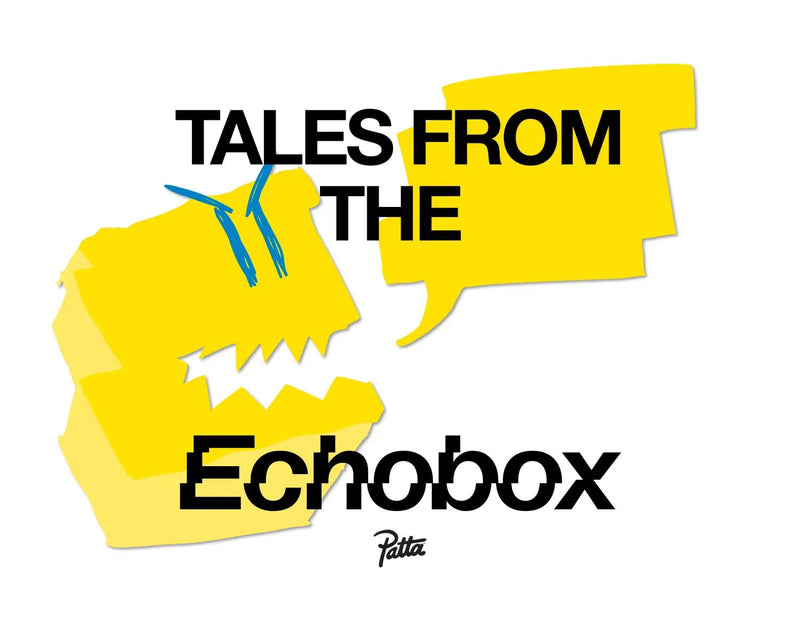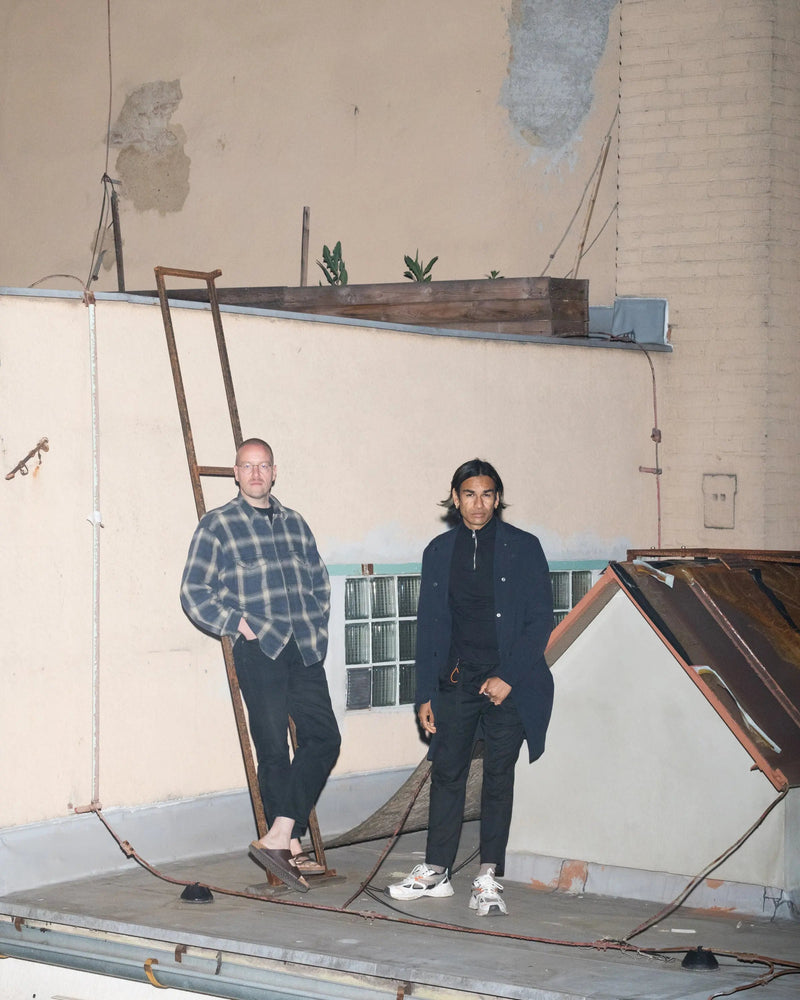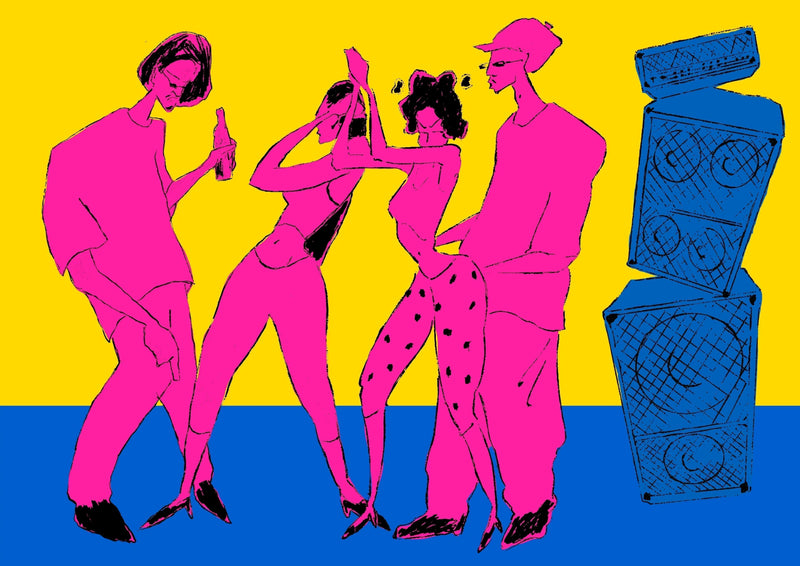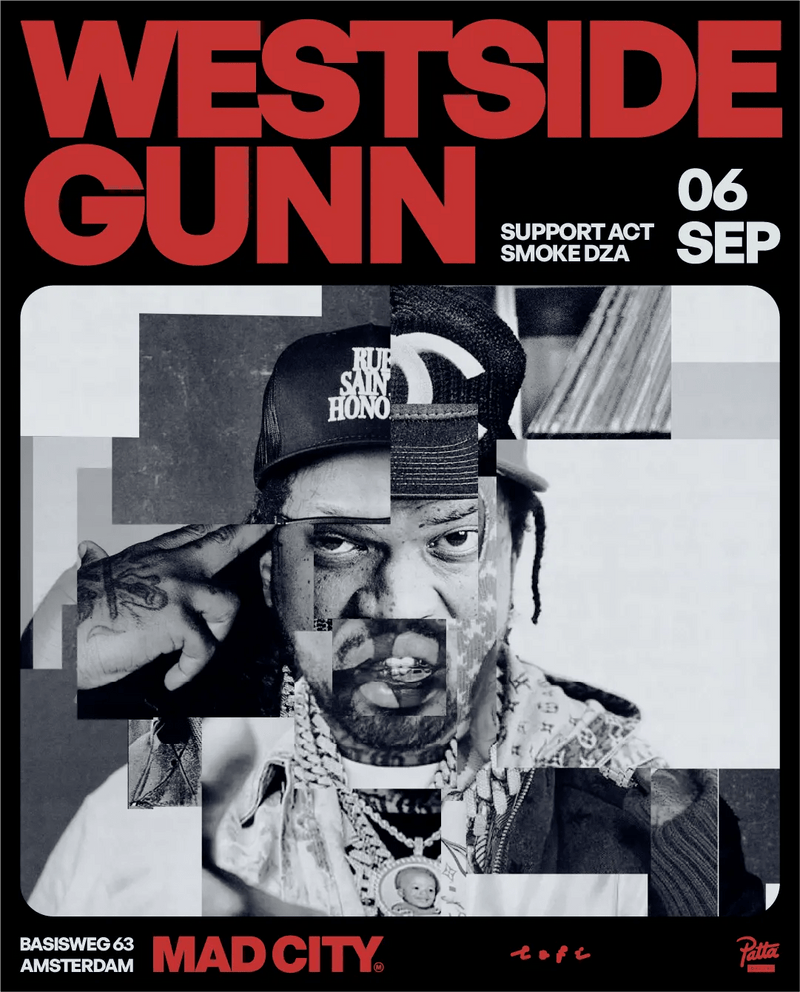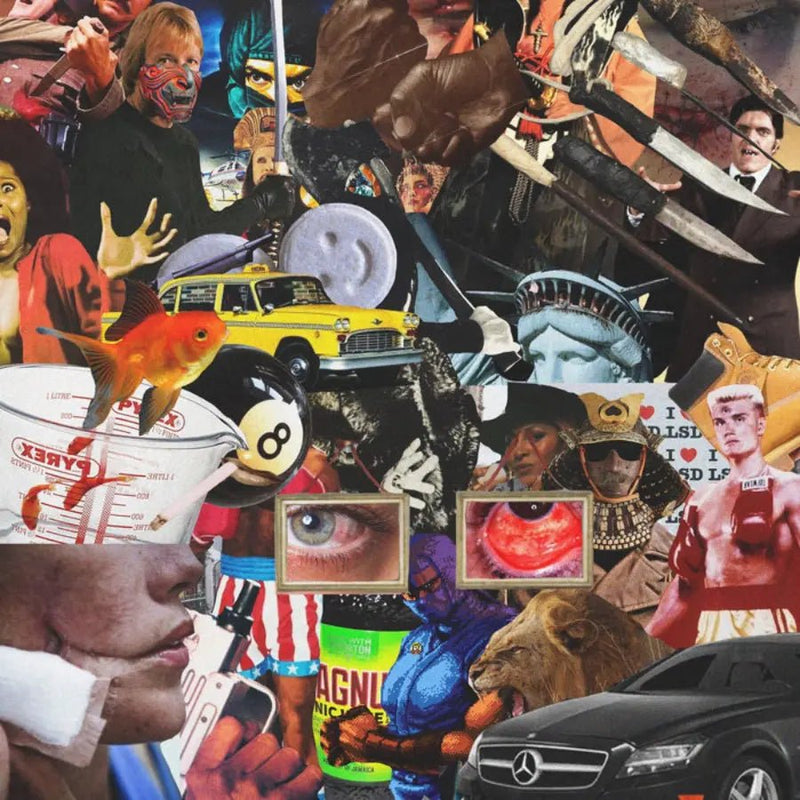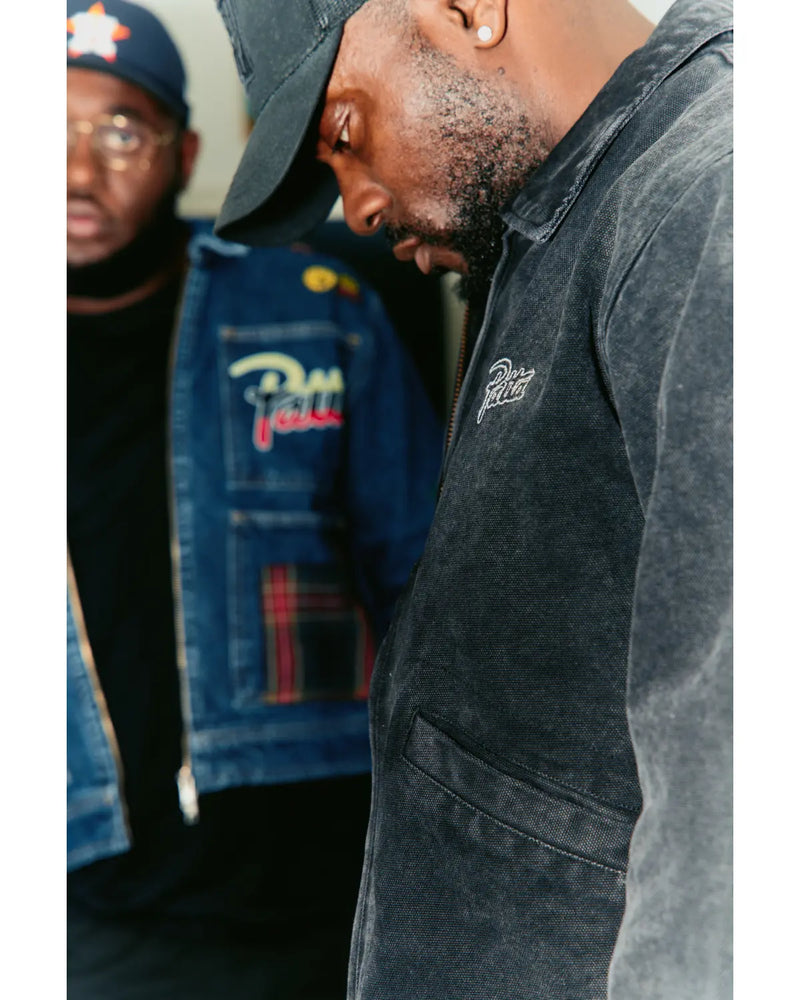
Get Familiar: Ruff Sqwad
Get Familiar: Ruff Sqwad
Interview by Passion DzengaRuff Sqwad's story begins long before the YouTube era—back when youth clubs had vinyl decks, pirate radio ruled the city, and a TDK tape could change your week. More than twenty years ago, a loose neighbourhood posse of about thirty friends tightened into a small music unit—Slicks, Shifty Ridos and company—carrying the street name “Rough Squad” into studios, stairwells, and transmitter rooms. Their early education was communal and hands-on: Ghanaian household sounds and pop radio at home, drum & bass and garage on the block, and hours spent DJing and MCing in youth centres that doubled as classrooms. Pirate radio turned that energy outward—bedroom recordings to Deja/Rinse reach—while pressing their own vinyl taught business before there was a blueprint.As Channel U/AKA beamed grime into living rooms, the crew condensed and professionalised, but the ethos stayed DIY: passion first, structure second. In-house producers pushed one another daily, forging a signature that’s emotional and militant at once—heard in era-defining instrumentals like “Together” and “Functions on the Low.” Two decades on, the landscape has shifted from subs to streams, yet the core hasn’t: community, craft, and the mission to move people at 140 BPM. This conversation traces that arc—from youth-club spark and pirate missions to national tours and international stages—and why, for Ruff Sqwad, the music still feels authentic.Take us back to the very beginning—how did Rough Squad form, and who were the founding members?It started over 20 years ago as a big neighbourhood crew—about 30 of us hanging out and moving between youth clubs. From that, a smaller music unit formed: myself, Slicks, and Shifty Ridos. We kept the larger crew’s name and carried it into the music—Rough Squad. We were about 12–13, learning as we went. Being together every day—DJing, MCing, messing with gear—turned friends into musical partners.For readers in the Netherlands who didn’t grow up with UK youth clubs—what were they like, and why were they important?Youth clubs were community spaces with pool tables, table tennis, and—crucially—music equipment. Many had vinyl decks or a little studio. If you had records or a way to get them, you could learn to mix; if you wrote bars, you could practise on the mic. One of my first memories is walking into Devas Youth Club, seeing a young DJ blending two drum & bass tunes so clean it sounded like one—turned out it was Dizzee Rascal. Without those clubs, a lot of us wouldn’t have developed our skills or confidence.What sounds shaped you at home and around the ends before grime?At home: Ghanaian music and whatever was on national radio—pop, rock, chart hits. TV introduced us to the packaging of music—boy bands, pop acts—before we discovered hip-hop, then UK sounds. In the area and at school we heard drum & bass and UK garage, which led us to grime. That mix—African/Caribbean roots, pop radio, and the UK underground—fed into our style.When did you first ‘see yourselves’ in the music?For some of us, drum & bass/jungle came a bit earlier; for others, UK garage into early grime was the first time we saw people who talked like us, dressed like us, and came from where we came from—So Solid, Pay As U Go, that generation. In school, loads of MCs were Afro-Caribbean; it felt natural to step in.What did the first steps into pirate radio look like, and how did the crew name fit into that journey?We were making tapes in bedrooms—TDKs recorded at each other’s houses—long before radio. Hearing our first track “Tings in Boots” on air (shout to Triple S Crew on Magic FM) was magical. From there, pirate was the next level. Stations had hierarchies—Rinse FM and Deja Vu had huge reach—so moving from a smaller station to Deja felt like going from a 50-cap room to 1,000 people. Rough Squad started as a street crew name; when radio came into the picture, the name was already established.What were those early pirate missions like—logistics, crews, and risks?We were kids travelling across London to abandoned flats or converted council spaces that hosted transmitters and studios. It could be risky—you’d hear rumours about certain areas—but the love for music outweighed it. We usually rolled five-deep at least, sometimes with non-musical friends in the entourage. Pirate radio took us out of our neighbourhoods and showed us the city.Was there guidance from elders, or was it self-driven?A bit of both. We were lucky: Dizzee, Wiley, DJ Target, and PAUG were from nearby, so those networks and youth clubs gave us proximity. You’d spit a lyric in a session, someone would clock you and invite you up. Early on, it was about being heard—getting a turn on the mic. When artists started getting signed, it clicked that this could change our lives.Talk us through your first vinyl—why press it, and how did you make it happen?“Tings in Boots” had heat on the underground—especially with a young Tinchey Strider on vocals—so pressing it felt obvious. The model was clear from our peers: build a tune in the underground, get it on radio, cut dubplates, then press. We handled everything: booking studios, getting mixes, cutting dubs for radio, then pressing vinyl and hand-to-handing to shops. Some shops said no (and later those tracks became some of our biggest). Vinyl sales became our first legit income stream before proper shows and bookings scaled.How did distribution evolve once demand grew?At first, it was literally records in a car, shop to shop. As demand picked up, distributors stepped in to place stock across the country. It turned DIY hustle into a small business and taught us about the industry—production costs, timelines, margins—while keeping the streets involved.Looking back, what did that ecosystem—youth clubs, pirates, vinyl—give Rough Squad that streaming can’t?Access and identity. Youth clubs gave us skills and community. Pirate radio gave us reach, urgency, and a live feedback loop. Vinyl gave us ownership and revenue. Together, they made a pathway for kids from our ends to be heard—before algorithms—by sheer force of sound and consistency.Channel U/AKA put you on TV screens. How did that shift—from pirate sets and vinyl—change things?It condensed the crew. We started as 30 friends on the road, became 6–7 for the pirate era, and tightened further once TV rotation kicked in. When one of us started smashing shows nationwide with a bigger camp and then signed a deal, the spotlight widened. It felt strange at first—seeing your guy on other stations while you’re still doing your own sets—but it made sense and lifted the whole name. Tours followed, some of us jumped on those dates, and suddenly we’d gone from radio rooms to arenas of 10–15k.Mid-2000s grime went entrepreneurial—DVDs, tees, CDs, Star in the Hood, as well as exposure on commercial radio such as BBC Radio 1Xtra and Kiss FM. How did you keep the engine running as you moved from teens to young adults?Passion first, then structure. We lived together musically—woke up making tunes, passed houses to listen, hit radio twice a week, booked studio, pressed records. It wasn’t Google Calendars; it was brotherhood. Roles emerged: some of us organised sessions, deadlines and drops; others handled mixes, vinyl, videos. Because we were around each other 24/7, decisions happened in motion.“Together” still erupts clubs. What’s the origin story?Dirty Danger made the beat at around 14. It began as a loop—open, musical, cinematic. The moment it came through the wall, it felt special. He nearly binned it; we pushed him to finish it. In a later studio run (he funded the time), the hook got laid and the tune became a crew staple. It’s the clarity and space that let everyone paint emotion—that’s why it lasts.And “Functions on the Low”? How did that sound crystallise?Nothing was board-roomed. We had multiple in-house producers (each with a distinct palette) feeding off one another—same DAWs, different ears. Friendly pressure kept the bar high: if someone dropped four new riddims today, you weren’t showing up empty-handed tomorrow. We’d build a tune in a week to test it on radio the next. The overlap wasn’t formula; it was shared standards and constant iteration.Quality control in a big crew is tricky. How did you keep the sound coherent without boxing yourselves in?By listening—to each other and to the crowd. It wasn’t competition so much as catalysts: one synth line would spark another tune; a drum pocket would trigger a new flip. Because the workflow was relentless—five ideas a day at times—the weak fell away and the strongest ideas defined “the sound” organically.What’s changed in grime across 20+ years—and what hasn’t?DIY radio is gone, streaming is king, labels and platforms shifted the power a few times. But the culture cycles back: collaboration is up, the community feel is returning, and people are making grime because it moves them, not just the metrics. It doesn’t feel like 20 years because we never stopped.Grime’s international pull is real. Why keep bringing the sound to places like the Netherlands?Because the sound is bigger than us. It sits around 140 BPM, but it’s its own lane—recognisable, iconic, still evolving. We’re grateful to travel with it and rebuild, city by city. The Netherlands has long supported UK bass culture, and linking with local pillars only strengthens the ecosystem.If your music lived in a film, what genre would it score?Epic battle cinema—think 300 or Gladiator. Melodic, martial, high-stakes energy. It’s war music.On Saturday, November 1st, La Cassette take over MONO, Rotterdam presenting a crewnight. Bridging the gap between the Netherlands and the UK. Tickets are available now with party contributions starting at €14 and going up to €17.50.
